SCOUT OF THE WEEK
Brianna
Brianna is our Scout of the Week because she set a good example to others during our independent work time (centers) this week. Because Brianna worked so carefully on her "Build-a-Sentence" center, she was able to check and sign off that center for the other students. If someone needed help with it, Brianna showed them how to do it. She was very patient and kind.
In her Book Club, Brianna enjoys thinking about and discussing the books we read, as well as listening to what her peers have to share.
Congratulations Brianna!
|
THIRD GRADE ON STAGE
Well, maybe not "on" stage, but very close! This week the third graders of LWW visited the Anderson Center at Binghamton University. We watched a multicultural dance troupe perform dances from all over the world.

The dancers performed 11 different dances. In addition to cultural dances from Scotland (a Scottish Sword Dance), India, and Africa, there were dances to American music (including Michael Jackson) that demonstrated tap dancing, ballet, and jazz. One ballet focused on the difficulty of making choices. Another dance, inspired by September 11, was about people helping one another.
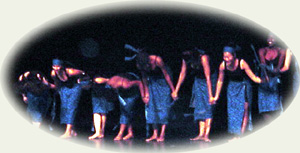
Mike's dad and Tiano's dad were wonderful chaperones. Also with us were Miss Allio and Mrs. Cash who provided great assistance. The support of our adults allowed us to have a very safe and fun time!
|
|
PARA-OLYMPICS ON TV
Our friend Dan Kosick is on the U.S. Ski Team competing in the Para-Olympics that begin next Saturday! On TV:
Sat. 3/9: 2-3 p.m. (NBC)
3/9 - 3/16: 6 - 7 p.m. (every
day on A & E - cable channel 38).
|
READER BUDDIES OF THE WEEK
Ryan Sch. & Alex
Ryan Sch. and Alex are our Reader Buddies of the Week. Ryan decided on Monday that he wanted to read to his Reader Buddy the book we had just finished reading in our Book Club. He practiced all week. He knew the story so well that he was able to picture-walk through the book and tell the whole story to Alex in his own words. Ryan's enjoyment of the story hooked Alex immediately, and Alex paid attention the whole time!
Congratulations Ryan Sch. & Alex!
|
PARP PEP RALLY AT LWW
Cheerleaders and athletes from the UE High School came to LWW on Friday for a pep rally in support of PARP (Parents as Reading Partners). Afterward, they handed out free books to each of the students.
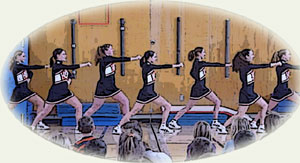 
|
|
HAPPY BIRTHDAY DR. SEUSS!
Who is Dr. Seuss? His name is Theodore Geisel and he was born on March 2, 1904.
In 1936, when he was 32 years old, he wrote his first book and titled it And to Think I Saw It on Mulberry Street.
In 1955, Theodore wrote a book to promote literacy in schools. His publisher gave him a list of 400 frequently used words and asked him if he could write a book with only 250 of those words. Theodore did it with 220 words and he called it The Cat in the Hat!
In 1960, someone bet Theodore that he couldn't write a book with only 50 words. He did it! It is called Green Eggs and Ham!
Theodore died in 1991. He wrote over 40 children's books in his life. Every year, on his birthday, we celebrate "Read Across America Day"!
|
MATH STORY MAPS
When we are making a Story Map for a book, the first thing we do is identify the problem in the story. When we are listing the events in the story, we don't want to list every single thing that happens on every single page. We ask ourselves: "What happens next that helps solve the problem?" When we identify the solution, we make sure that it "matches the problem" - that it answers the question.
In math, when we were working on Problem Solving Strategies for problems that had too much information, our Story Map graphic organizer was helpful to us!
- PROBLEM: First we identified the question. We underlined the "most important word" in the question. That word will tell us what the number in our solution refers to (6 inches, 6 cups, 6 toenails, 6 what?)
- EVENTS: Next we asked ourselves: "What information helps us solve the problem?" If the information doesn't help us solve the problem, we don't care about it! We only list the information that helps solve the problem.
- SOLUTION: For our solution, we first write out the number sentence (either an addition, subtraction, or multiplication sentence with numbers: 2 X 6 = 12). Then we write the answer to our question using a complete sentence. To do this, we look at the question and turn it around into a statement. We make sure that we include our "most important word" so that our "solution matches the problem."
Tip to remember: In a multiplication number sentence, the first factor is the number of groups, and the 2nd factor is how many are in each group. (For example, 2 X 6 = 12 is read: "2 groups of 6 equals 12." There are 2 groups, and there are 6 in each group.)
|
EXAMPLE OF MATH STORY MAP:
Cougars can travel 20 feet in one leap, and 25 miles in a day. They can also see 6 times as well as humans in the late afternoon light. How many feet can a cougar travel in 2 leaps?
|
PROBLEM
What is the question?
Underline the most important word - the word that needs to be used in the solution.
How many feet can a cougar travel in 2 leaps?
|
|

|
|
EVENTS (INFO)
(information)
What information helps solve the problem?
- Two leaps
- 20 feet in each leap
Don't list any information that doesn't help solve the problem!
|
|

|
|
SOLUTION
Make sure the solution matches the problem.
- Write a number sentence:
2 x 20 = 40
- Answer the question (the problem) using the most important word:
A cougar can travel 40 feet in 2 leaps.
|
|
|
|
TURNING STORY MAPS INTO PARAGRAPHS
Two of our Book Clubs worked on the stories, Bony-Legs and Aunt Eater Rides the Train, this week. Another of our Book Clubs worked on Uncle Jed’s Barbershop. When we turn a Story Map into a one-paragraph Summary, we write sentences in this order:
- An introductory sentence that introduces the book and what the author wants us to know about it.
- The problem.
- The events (in order) that help solve the problem. We use “transitional words” such as “next, then, after that, later” to help show that the events are happening in order.
- The solution (Make sure that “the solution matches the problem.”)
- The concluding sentence. This sentence has an important job. It has to tie back to the introductory sentence.
Since we can copy the problem, events, and solution right off of the graphic organizer, writing a paragraph is the easy part! Most of the “thinking” went into making the Story Map! When we are writing our paragraph, the only sentences we have to think a lot about are the first one and last one!
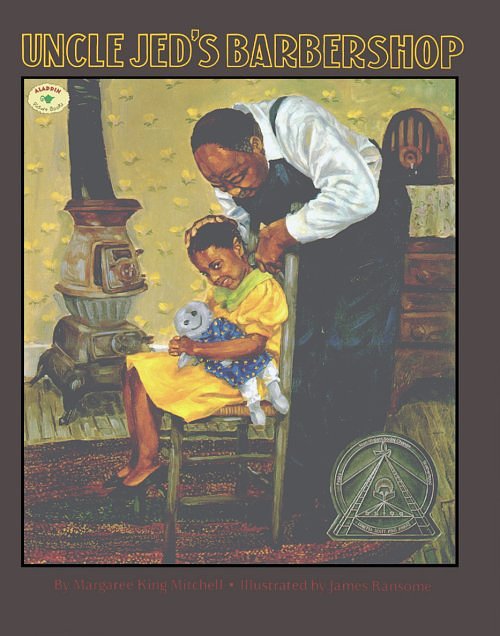 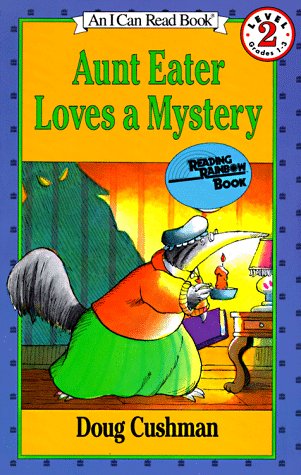 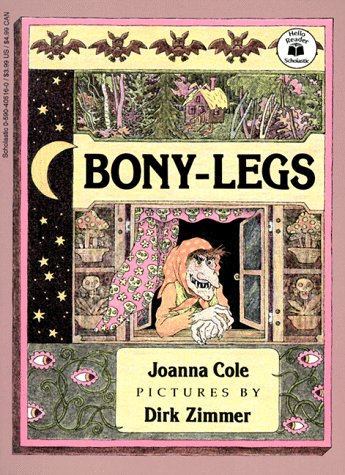
Look below to see how we turned our Story Maps into one-paragraph Summaries!
|
|
Aunt Eater Rides the Train: THE SUMMARY
GRAPHIC ORGANIZER
(STORY MAP)
Characters: Aunt Eater, passengers, conductor, engineer
Setting: On a train
Problem: Aunt Eater has the wrong bag.
Solution: Aunt Eater gets her bag from the Engineer.
The Events:
- Aunt Eater asks the conductor for help.
- Aunt Eater and the conductor ask the passengers if they have seen her bag.
- Aunt Eater and the passengers hear popping sounds coming from the engine and go to check it out.
- Aunt Eater and the engineer figure out that their bags had been switched by accident.
|
THE PARAGRAPH
The story Aunt Eater Rides the Train is about an anteater who takes a trip on a train. Aunt Eater finds out that she has the wrong bag. Her bag has popcorn in it and this bag has tools. She asks the conductor for help. Then Aunt Eater and the conductor ask the other passengers if they have seen her bag. Suddenly they hear popping noises coming from the engine room so they go to investigate. When Aunt Eater sees her bag in the engine room, she and the engineer figure out that their bags had been switched by accident. Aunt Eater gets her bag back. Aunt Eater solved a mystery on her train trip.
|
|
Juicy words: suddenly, passengers, popping noises, switched, accident, solved, mystery
|
|
|
Bony-Legs: THE SUMMARY
GRAPHIC ORGANIZER
(STORY MAP)
Characters: Sasha, Bony-Legs, The Gate, The Dog, The Cat
Setting: The woods
Problem: Bony-Legs wants to eat Sasha.
Solution: Sasha escapes and doesn't get eaten.
The Events:
- Bony-Legs locks Sasha in the house (part of the problem)
- The cat gives her a mirror.
- The dog gives her a comb.
- The cat, dog, and gate help her to get away.
- Sasha throws down the mirror and it turns into a lake.
- Sasha throws down the comb and it turns into a gigantic wooden fence.
|
THE PARAGRAPH
The story Bony-Legs is about a girl who meets a creepy witch in the woods. Bony-Legs wants to eat Sasha so she locks her in the house. The witch's cat gives Sasha a silver mirror. The witch's dog gives her a wooden comb. Then the cat, dog, and gate all help Sasha to get away from the witch's house because Sasha had been generous to them. When the witch chases after Sasha, she throws down the mirror and it turns into a deep, silver lake. Next she throws down the comb and it turns into a gigantic wooden fence. The witch is trapped so Sasha escapes and doesn't get eaten. Sasha never sees the witch again.
|
|
Juicy words: creepy, locks, silver, wooden, generous, throws, gigantic, trapped, escapes
|
|
Uncle Jed's Barbershop: THE SUMMARY
GRAPHIC ORGANIZER
(STORY MAP)
Characters: Uncle Jed, Sarah
Setting: In the South, in the country, the past
Problem: Uncle Jed doesn't have enough money to open his own barbershop.
Solution: Uncle Jed finally has enough money to open his own barbershop on his 79th birthday.
The Events:
- Uncle Jed goes to people's houses to cut their hair.
- Sarah gets sick and Uncle Jed pays $300 for her operation.
- The bank fails and Uncle Jed loses $3000.
- Uncle Jed still cuts people's hair at their houses.
|
THE PARAGRAPH
The story Uncle Jed's Barbershop is about a man who never gives up on his dreams. Uncle Jed's dream is to open his own barbershop, but he doesn't have enough money to do that. Uncle Jed travels to people's homes to cut their hair. Then Sarah, his niece, gets sick and needs an operation. Uncle Jed pays $300 for her operation. After that the bank fails and Uncle Jed loses $3,000. Jed doesn't give up. He keeps going to people's homes, cutting their hair, and saving his money. He finally has enough money to open his own barbershop on his 79th birthday. He made his dream come true.
|
Note: In Uncle Jed's story, some of the events don't help solve the problem. They are little problems that have to be overcome before the story's main problem can be solved.
|
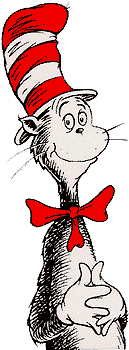
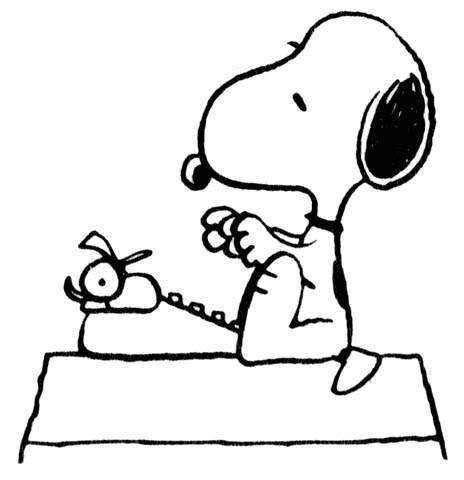


 Click on Snoopy Typing to go back to the Directory of Campfire Chronicles!
Click on Snoopy Typing to go back to the Directory of Campfire Chronicles!
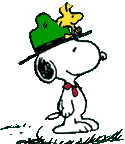 Click on the Beagle Scout to go back to Camp Linus!
Click on the Beagle Scout to go back to Camp Linus!